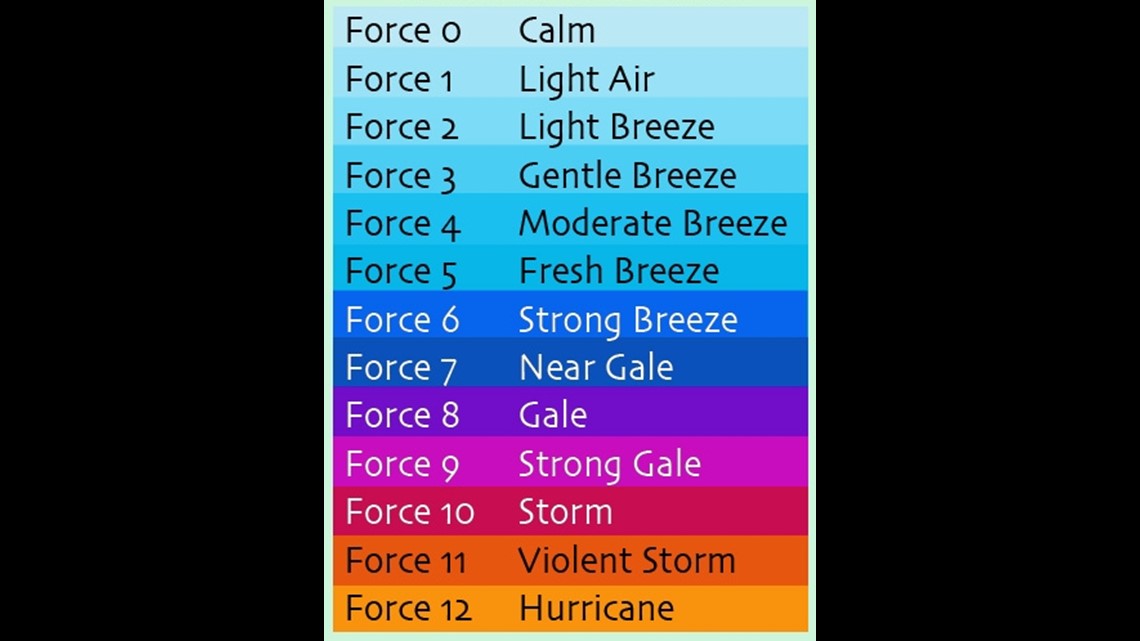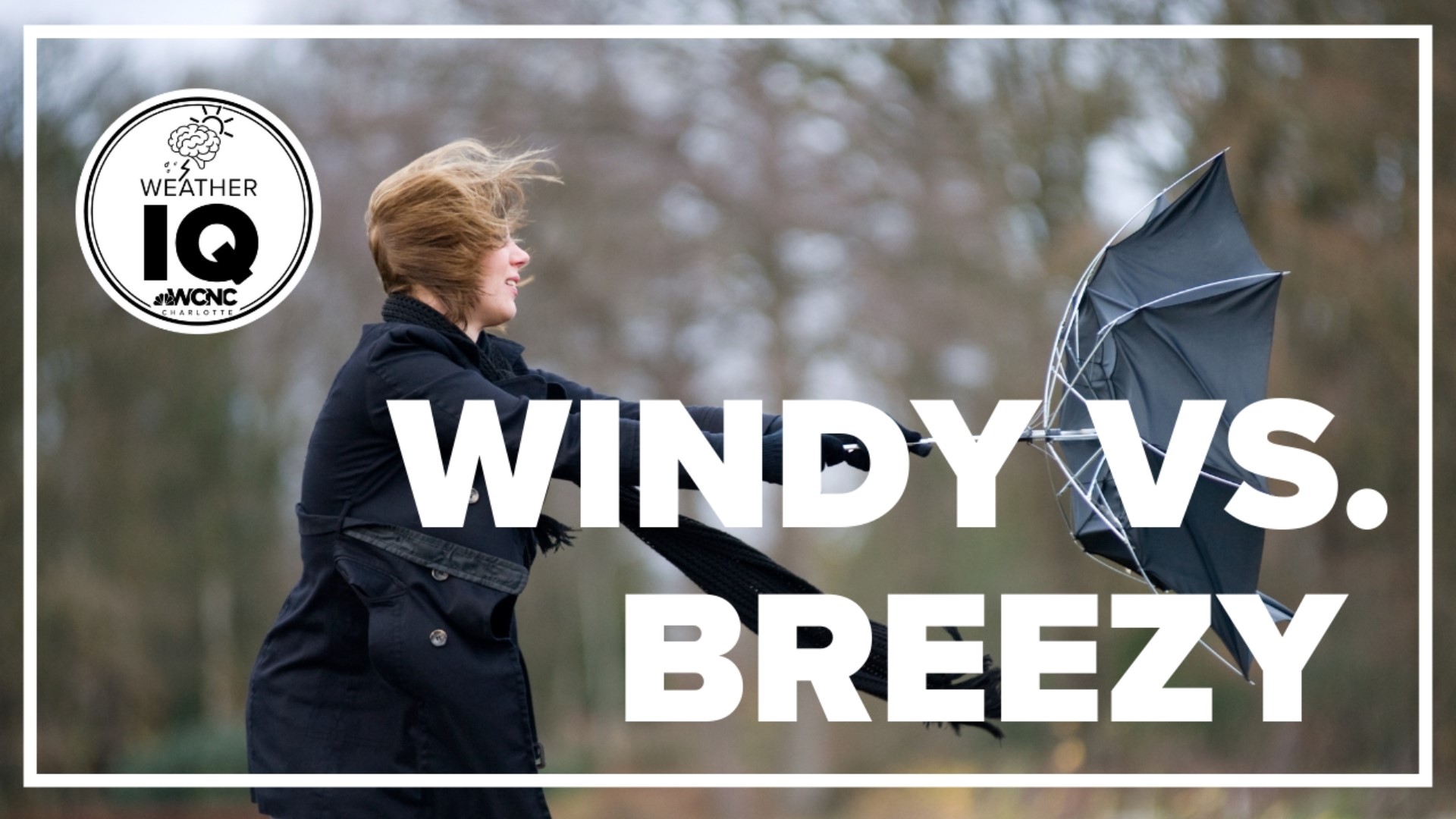CHARLOTTE, N.C. — Wind can make or break a day. A gentle light breeze can make a beautiful sunny day even better, or wind gusts up to 30 mph can ruin a picnic or an outdoor plan.
There are a lot of words to describe the level of wind, so let's learn what they technically mean in another installment of Weather IQ.
Windy vs. breezy
Let's start with windy and breezy. These two common weather words match with actual wind speeds.
According to NOAA's Weather Glossary, breezy means 15 to 25 mph sustained winds. Windy means sustained winds will be 20 to 30 mph. The keyword here is sustained, which means the average wind speed is over two minutes.
Blustery is another term meteorologists use. This has the same definition as breezy: Winds at 15 to 25 mph, but this term is used more commonly during the colder months to describe the wind.
Wind gusts
Wind gusts are rapid bursts of winds. A wind gust varies by 10 mph between the peak and lull of the wind. So when it is gusty, it means there are a lot of fluctuations in the wind for the day.
The Beaufort Wind Scale
There is a scale to estimate wind speeds and their effects. The Beaufort Wind Scale was created by Admiral Sir Francis Beaufort in the early 1800s to help sailors estimate the winds via what they see.
This zero-to-12 scale is still used in modern day to estimate wind strengths.


- Zero: Calm - Smoke rises vertically
- 1: 1 to 3 mph (Light Air) - Barely moving
- 2: 4 to 7 mph (Light Breeze) - Wind can be felt on your face/skin and leaves rustle
- 3: 8 to 2 mph (Gently Breeze) - Leaves and small twigs constantly moving, light flags extended.
- 4: 13 to 18 mph (Moderate Breeze) - Small branches are moving. Dust and loose paper raised.
- 5: 19 to 24 mph (Fresh Breeze) - Branches of a moderate size move. Small trees and leaves begin to sway. Surface waves increase.
- 6: 25 to 31 mph (Strong Breeze) - Large branches in motion. Whistling heard in overhead wires. Umbrella use becomes difficult. Empty plastic bins tip over. Some sea surface spray is possible. Larger waves begin to form.
- 7: 32 to 38 mph (Near Gale) - Whole trees in motion. Effort needed to walk against the wind. Moderate sea mist. Also known as 'moderate gale'.
- 8: 39 to 46 mph (Gale) - Some twigs broken from trees. Cars veer on road. Progress on foot is seriously impeded. Long streaks of foam form on the ocean. Some refer to this as a 'fresh gale'
- 9: 47 to 54 mph (Severe Gale) - Some branches break off trees, and some small trees blow over. Construction/temporary signs and barricades blow over. Slight structural damage starts occurring at this time. Also known as 'strong gale'.
- 10: 55 to 63 mph (Storm Force) - Trees are broken off or uprooted, saplings bent and deformed. Poorly attached asphalt shingles and shingles in poor condition peel off roofs. Ocean takes on a white appearance with very high waves.
- 11: 64 to 73 mph (Violent Storm) - Widespread damage to vegetation. Many roofing surfaces are damaged; asphalt tiles that have curled up and/or fractured due to age may break away completely.
- 12: 74+ mph (Hurricane) - At this point, the Saffir-Simpson Scale takes over.

